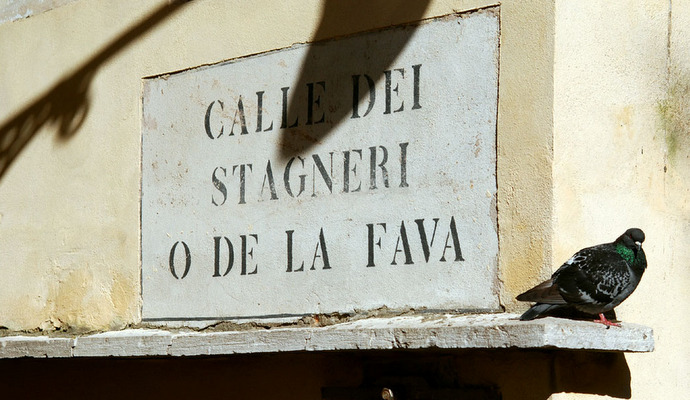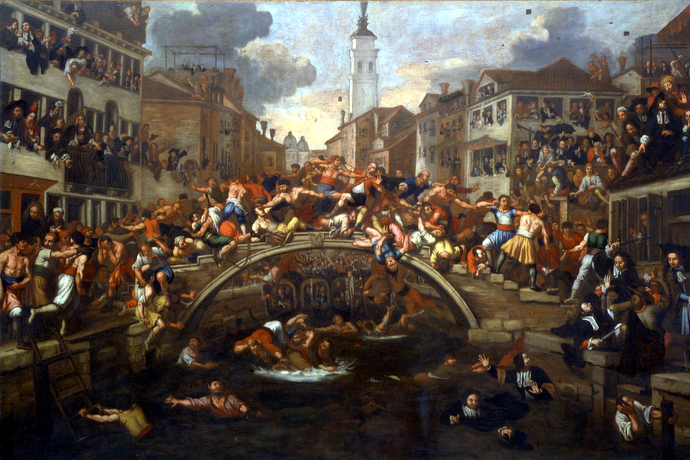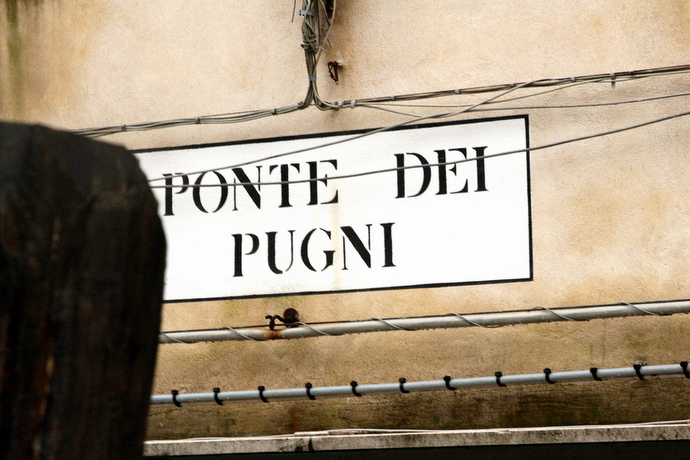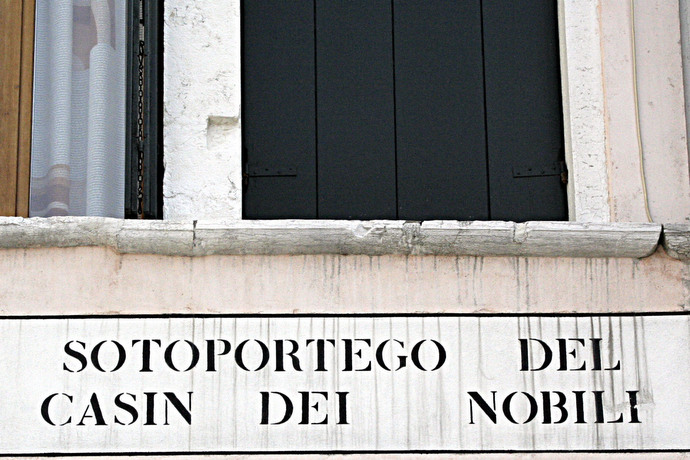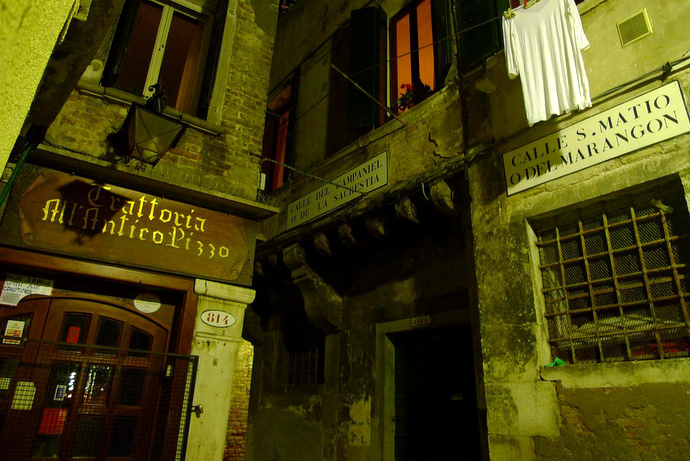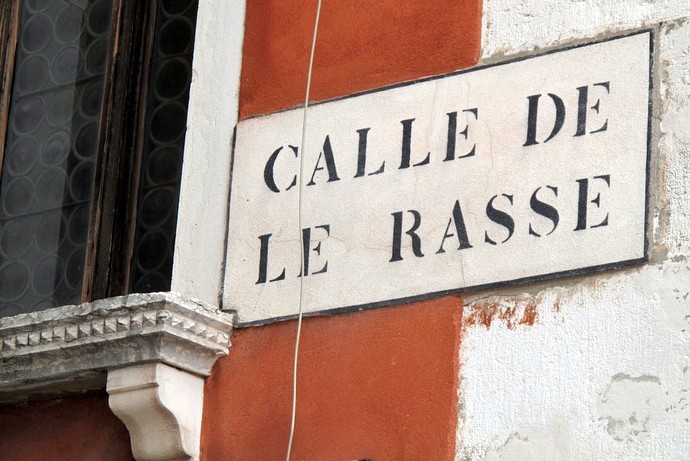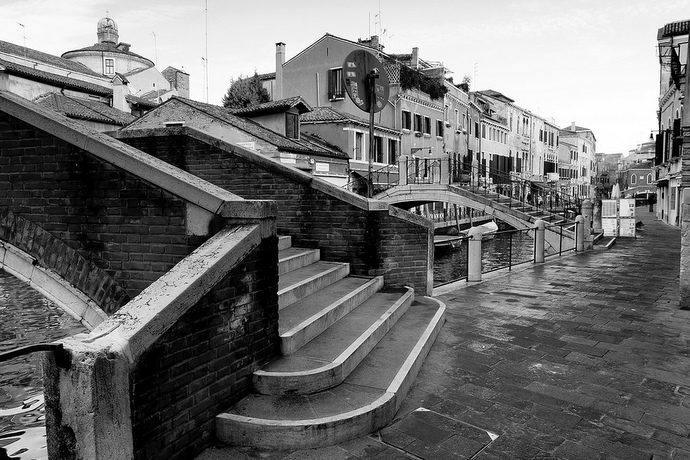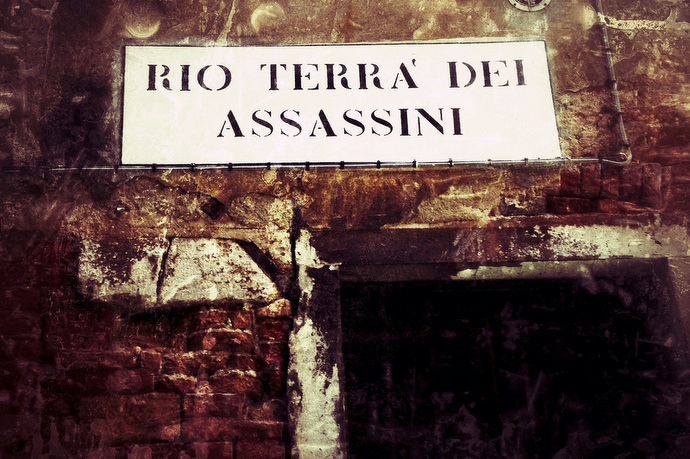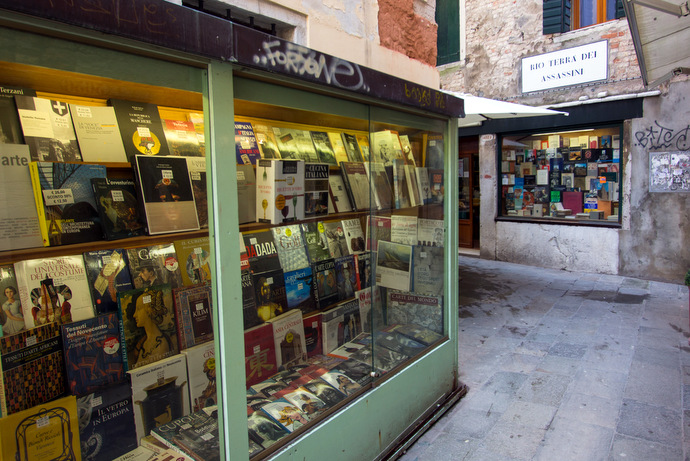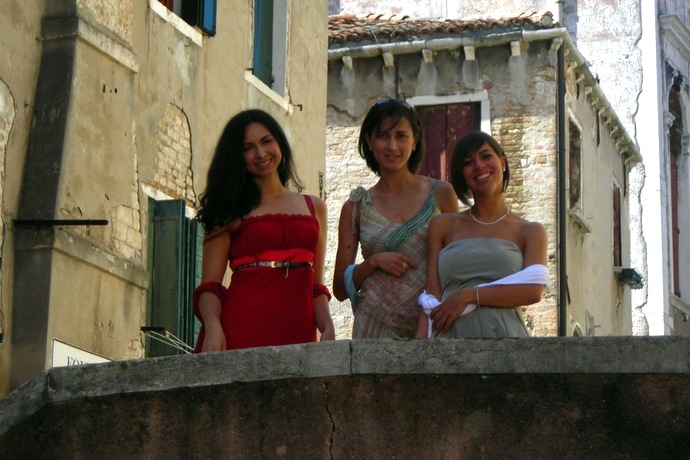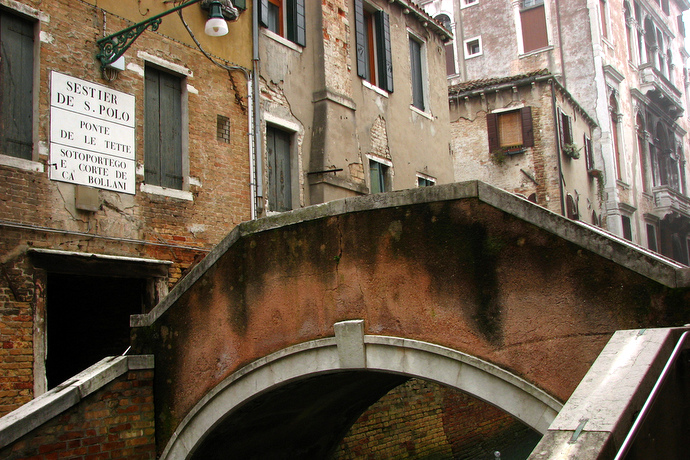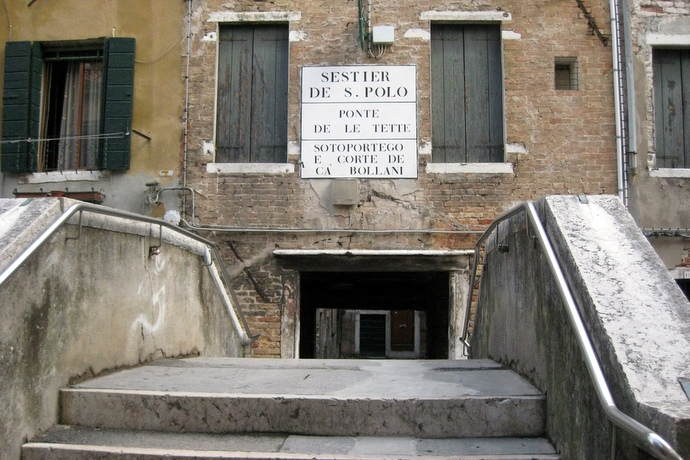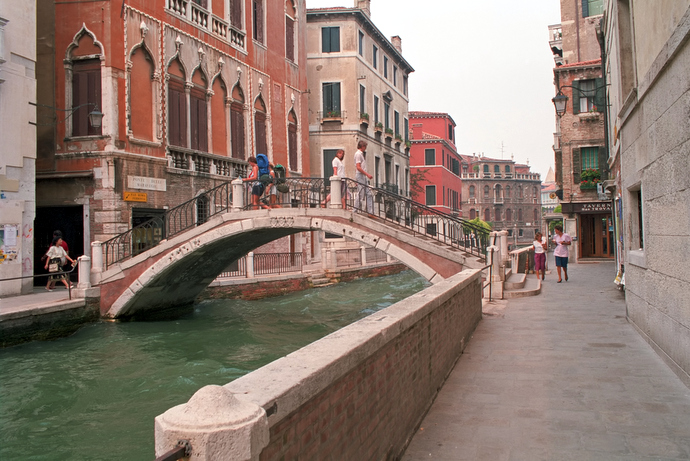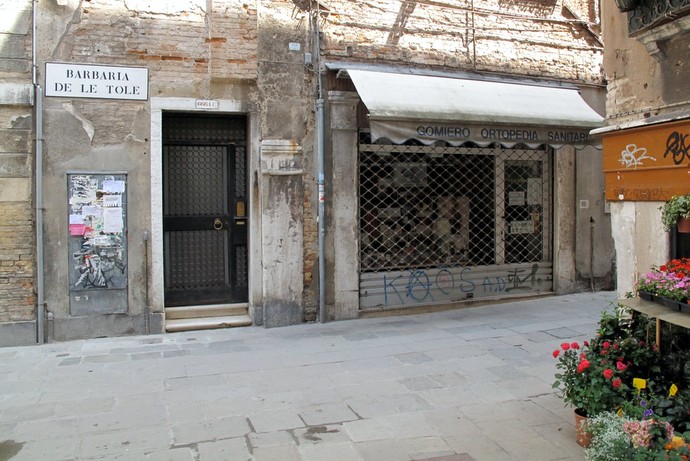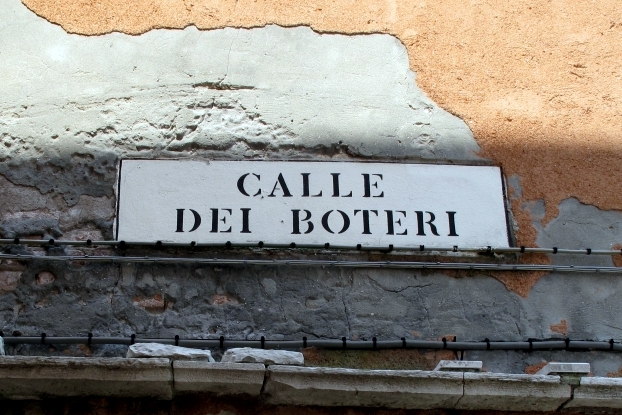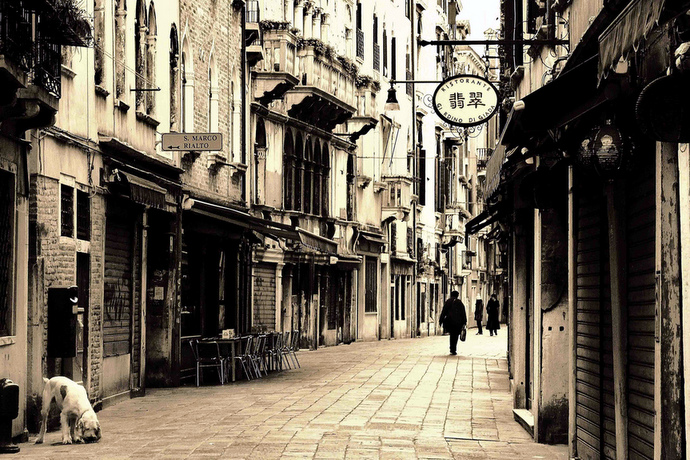10 Nizioleti
Sheets for road signs
In Venice, the directions are written on “sheets”. In the old town there are five thousand nizioleti which indicate bridges, streets, foundations, salizade, fields, squares and districts. The nizioleti (nizioli in Venetian) are white rectangular panels, like small sheets, and the frame and letters are colored black. The place names are inspired by the names of the families who lived there, the work that was carried out in that area (forno, tagiapiera, calderer, boteri), the communities that lived there (Bridge of the Greeks for example) and also by the legends and stories connected to those places. And some of these names are really extravagant.
We would like to suggest a route with 10 nizioleti that deserve to be seen and recounted. So, lift up your eyes and go hunting for these place names and have fun discovering many others on your own!
- On the San Barnaba Rio is the Ponte dei pugni, which once held the famous punch-ups between the nicolotti, fishermen from the north part of Venice, and the castellani, carpenters from the south. On top of the bridge you can still see the footprints that recall these clashes during which there were dozens of wounded and even some dead that all ended up falling into the channel.
- In the Campo San Barnaba as well you’ll find the Sotoportego del Casin dei Nobili: they were basically small apartments or rooms which were open only to nobles. Dances, dinners and games of chance took place here but over time they became places of prostitution. So much so that the Consiglio dei Dieci, imposed their closure.
- In Dorsoduro, near the Church of the Jesuits, you will find the Calle del Marangon. The marangoni were carpenters, who specialized in working on ships, construction, furniture and wooden frames. But Marangona is also the great bell in the San Marco bell tower, whose hourly stroke helped the workers of the Arsenale keep time.
- Near the church of San Zaccaria is the Calle de le Rasse. Its name derives from rascia, a woolen cloth produced in the kingdom of Rascia, currently Serbia. In fact in the eighteenth century huge quantities of woolen cloth were stained and sold in this area.
- At the Tolentini, on the Gaffaro Rio, you will find the Ponte dei squartai, which derives from the word squartati (butchered). It was here that they exposed the bloody bodies of those who were convicted of atrocious crimes. Once the convicts had their hands amputated they were taken around the city, then decapitated and hacked to pieces in San Marco.
- In Calle de la Mandola, near the Campo Sant’Angelo, you will find the Rio Terà dei Assassini: The name of this street derives from the many murders that took place here, especially at night. For this reason La Serenissima ordered to have the streets illuminated by lanterns.
- In the San Polo district, near San Cassiano, you will come across the Ponte de le Tette: it was here that the harlots exposed their prosperous breasts to entice passers-by. Apparently this custom was imposed by the Serenissima to counter the growing practice of sodomy. In short, it was preferable to have rather shabbily dressed prostitutes than men “sinning against nature.”
- Close to the Galleria dell’Accademia, in the Dorsoduro district, you can cross the Ponte delle Maravegie. According to some, the name derives from Maraviglia, the family who once lived here (apparently Belisandra Maraviglia died heroically in the war against the Turks in 1570).
- In the Castello district, close to Campo San Giovanni e Paolo, is a long and narrow street which is called Barbaria de le Tole. It seems that the name derives from deposits of timber that were once present here. The ‘tole’ in dialect are in fact wooden planks.
- At Rialto, in the productive heart of the city, you will find the Calle dei Boteri, where the winemaker’s barrels were once made. The Boteri formed part of a fraternity since 1200. In this area of Venice there are still evident traces of this fervent activity: on calle dell’Arco, in fact, at number 456, you will come across a door which has an enlarged opening underneath it, so that they could easily roll the barrels inwards and outwards.
